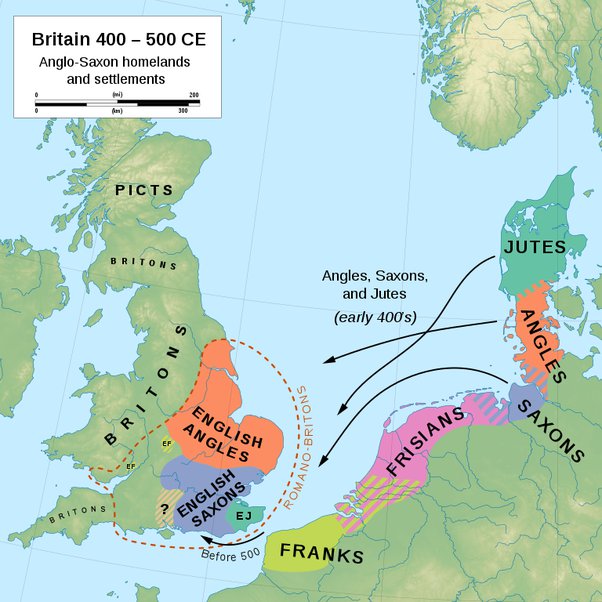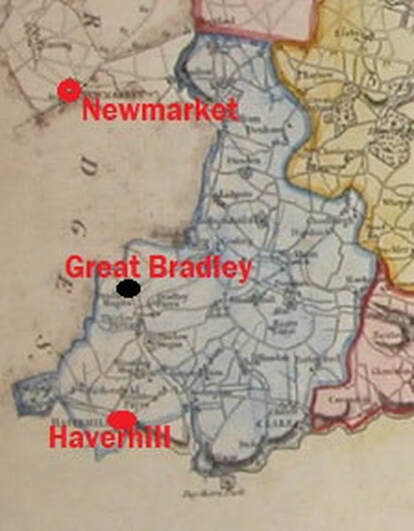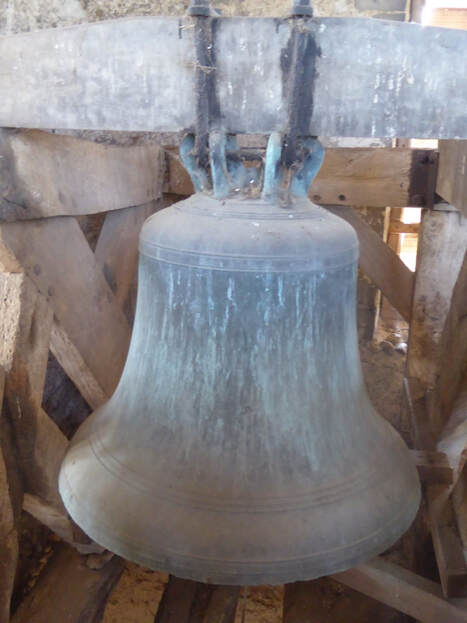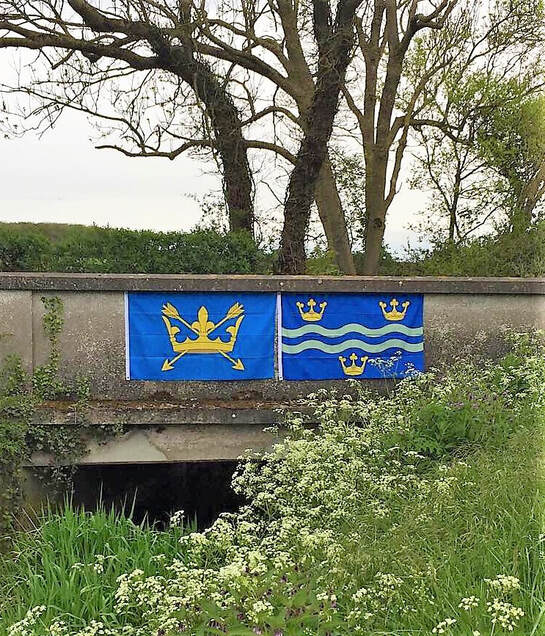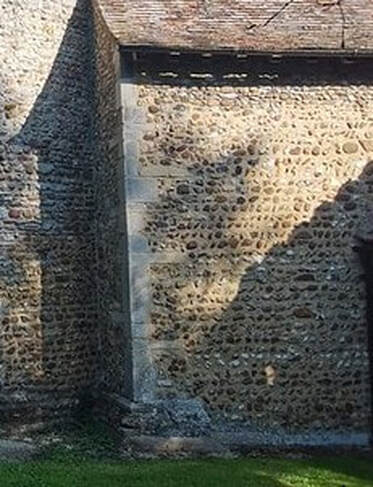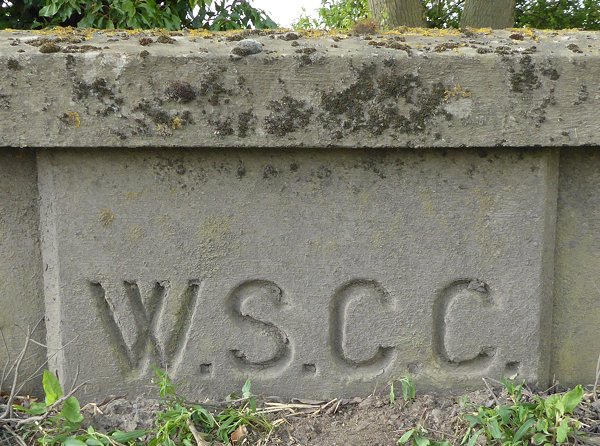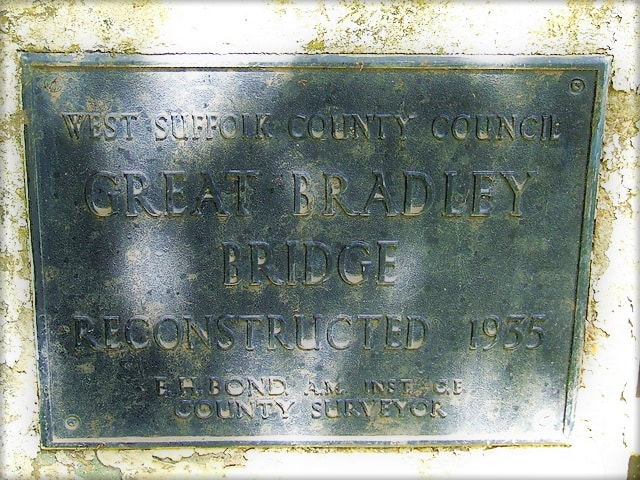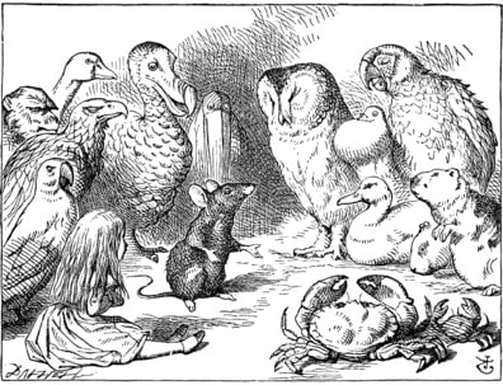Anglo Saxon Great Bradley
|
The information here builds on the History of Great Bradley published in 2000 by a team of villagers led by Barbara Buchs. See https://greatbradley.weebly.com/published-histories.htm
Although there is little physical evidence of the Anglo-Saxons or Vikings in Great Bradley, those that owned the land were involved in some key moments in history and their administrative legacy lives on in the village. The term Vikings is used here is used to cover the Danes, Norwegians, Norse and other Scandinavians. The Anglo-Saxons displaced the Romans and Romano-Celtic peoples living in the British Isles during the 6th Century. Great Bradley is in East Anglia, named after the East Angles who settled from Anglia in north Germany/ southern Denmark. East Anglia traditionally comprises Norfolk & Suffolk, meaning north folk and south folk. The area was ruled by Angles of the Wuffinga dynasty in the 7th & 8th centuries. |
Raedwald, one of the later mebers of the Wuffinga dyasty and King of East Anglia, had been converted to Christianity in 597. Suffolk as part of the Kingdom of East Anglia, began to be converted to Christianity after about 630, when King Sigbert requested help from Rome and was sent Bishop Felix who established his see at Domnoc (probably the present-day Dunwich). The port of Felixstowe is named after him. Monasteries were soon founded around the kingdom - at Blythburgh and Icanho (Iken) around 654 and Ely (673). Over 50 churches were dedicated in the Anglo-Saxon kingdom before the Danish incursions of the ninth century but little else is known about them. In 673 the distinction between Norfolk and Suffolk was cemented when Archbishop Theadore divided his East Anglian diocese in two, with Suffolk being run from Dunwich.
|
The county system as such was developedin Wessex, with "Hamtunscir" (Hampshire) recorded in 755, being the earliest recorded scir (i.e shire. The word 'county' is a Norman word and would become later). As the Wessex kings dominated the Anglo-Saxon kingdoms, the county system spread and in 895, that the name pagus Suthfolchi "the shire of the South Folk" was first used to describe a specific area. Pages was previously a Roman term for an administrative area and it is from this time modern county of Suffolk can be said to date.
A smaller unit of Anglo-Saxon administrative rule was a 'hundred', which was a group of villages of about a hundred households. Great Bradley was in the hundred of Risbridge which stretched from Clare and Haverhill in the south to Moulton, near Newmarket, in the north. This survived as district name until 1974 when the county of West Suffolk was formed. The former workhouse in Kedington was called the Risbridge Hundred Workhouse and although a housing development has now been buolt on the site one of the roads is caled Risbridge Drive. |
By the end of the 8th century East Anglia was independent again and King Edmund, after whom Bury St Edmunds is now named, was crowned King of the Angles on Christmas Day AD 855.
In 896 AD the Vikings killed Edmund, by shooting him with arrows. He was buried in present day Bury St Edmunds and was a patron saint of England until the 1200s when he was replaced by St George. St Edmund’s motif is a crown with arrows passing through it. One of the bells in Great Bradley Church features the St Edmund crown motif as part of the inscription in a band round the top of the bell (see pictures). It was made by Stefanyz (Stephen) Tonni’s foundry in Bury St Edmunds in 1576. It is 83cm in diameter and weighs over 300kg.
In 896 AD the Vikings killed Edmund, by shooting him with arrows. He was buried in present day Bury St Edmunds and was a patron saint of England until the 1200s when he was replaced by St George. St Edmund’s motif is a crown with arrows passing through it. One of the bells in Great Bradley Church features the St Edmund crown motif as part of the inscription in a band round the top of the bell (see pictures). It was made by Stefanyz (Stephen) Tonni’s foundry in Bury St Edmunds in 1576. It is 83cm in diameter and weighs over 300kg.
|
By 920 AD Great Bradley was again ruled by the Anglo-Saxons of Mercia. Great and Little Bradley were known to the Anglo-Saxons as just one place, i.e. Bradley. The word Bradley is derived from the Anglo-Saxon term Broad Ley, meaning Wide Clearing in Woodland. There is evidence of a Saxon church in Little Bradley but not in Great Bradley. The picture shows the Saxon stone and brick work of Little Bradley Church. It is therefore likely that the church for the Anglo-Saxons in this area was in present-day Little Bradley. It is possible that there was a wooden church in Great Bradley, but unlikely because that would mean two churches in the one place the Anglo-Saxons called Bradley. |
In the last years of the Anglo-Saxon kingdom the Overlord of the lands in Bradley was Edwin Leofric, Earl of Mercia, one of the largest and most powerful of the Anglo-Saxon Kingdoms. Edwin's grandmother was Lady Godiva, who is reputed to have ridden naked through the streets of Coventry on a horse to atone for her husband’s harsh taxation there.
One of the Saxon thanes (nobleman) who governed Great Bradley on behalf of the royal overlords was Ulf, son of Mani Swart. It is believed that he was the lord in area until 1071. Ulf was also lord of lands in Duxford and elsewhere.
One of the other rulers was Wihtgar Aelfricsson (meaning Wihtgar, son of Aelfric). Whitgar lived at least between 1042 – 1071. His father was Aelfric Moderscope. Aelfric is an Anglo-Saxon name, but Moderscope is a Viking word, which underlines the influence that both the Saxons and Vikings held over this area at different times.
Aelfric was one of the wealthiest people in East Anglia because he managed the lands belonging to Emma of Normandy. Emma was Queen to two Kings of England. Her first husband was the Saxon King Aethlred the Unready, King of England 966 – 1016. Her second husband was the Danish King Cnut, who succeeded Aethlred after his death as King of England from 1016 – 1035. A legend surrounding King Cnut is that he tried to turn back the tide.
One of the Saxon thanes (nobleman) who governed Great Bradley on behalf of the royal overlords was Ulf, son of Mani Swart. It is believed that he was the lord in area until 1071. Ulf was also lord of lands in Duxford and elsewhere.
One of the other rulers was Wihtgar Aelfricsson (meaning Wihtgar, son of Aelfric). Whitgar lived at least between 1042 – 1071. His father was Aelfric Moderscope. Aelfric is an Anglo-Saxon name, but Moderscope is a Viking word, which underlines the influence that both the Saxons and Vikings held over this area at different times.
Aelfric was one of the wealthiest people in East Anglia because he managed the lands belonging to Emma of Normandy. Emma was Queen to two Kings of England. Her first husband was the Saxon King Aethlred the Unready, King of England 966 – 1016. Her second husband was the Danish King Cnut, who succeeded Aethlred after his death as King of England from 1016 – 1035. A legend surrounding King Cnut is that he tried to turn back the tide.
One of Emma and Aethlred’s sons, King Edward the Confessor, ruled England from 1042 – 1066. It was Edward the Confessor in 1044 who granted the Benedictine monks of St Edmund control of West Suffolk. This county split was to last until 1935 and is recognised by an inscription on the side-wall of Sipsey Bridge and the plaque on Great Bradley Bridge in Hall Road.
When Edward the Confessor died in 1066 it was the lack of clarity over his succession, that led ultimately to the Norman invasion by Emma’s great-nephew later that year – an event that was to change England and Great Bradley for ever.
Anglo-Saxons, Vikings and Normans all laid claims to the kingdom of England following the death of the King Edward the Confessor. Harold Goodwinson, Earl of Suffolk, who was married to Ealdgyth, the sister of Edwin Leofricc had been crowned the last Saxon King of England in January 1066. In 1066 the Saxon Overlord of Great Bradley, Edwin Leofirc of Mercia, and his younger brother Morcar of Northumbria were defeated by King Harald Hardrada and a huge Viking army at the Battle of Fulford, near York. Harald was in turn defeated by King Harold five days later at the Battle of Stamford Bridge nearby. Harold himself died just three weeks later in October 1066 at the Battle of Hastings, reputedly by an arrow in the eye, during the Norman invasion led by William the Conqueror. This victory gave the crown of England to the Normans and ended Anglo-Saxon rule.
After the battle Edwin Leofirc and his bother Morcar reluctantly submitted to William but in 1068, they tried to raise an Anglo-Saxon rebellion in Mercia. They swiftly backed down when William moved against them. Edwin was killed by the Normans in 1071 when making his way to Scotland after being betrayed by his own people. It was at this point that his lands in Great Bradley were passed to a Norman Lord.
Anglo-Saxons, Vikings and Normans all laid claims to the kingdom of England following the death of the King Edward the Confessor. Harold Goodwinson, Earl of Suffolk, who was married to Ealdgyth, the sister of Edwin Leofricc had been crowned the last Saxon King of England in January 1066. In 1066 the Saxon Overlord of Great Bradley, Edwin Leofirc of Mercia, and his younger brother Morcar of Northumbria were defeated by King Harald Hardrada and a huge Viking army at the Battle of Fulford, near York. Harald was in turn defeated by King Harold five days later at the Battle of Stamford Bridge nearby. Harold himself died just three weeks later in October 1066 at the Battle of Hastings, reputedly by an arrow in the eye, during the Norman invasion led by William the Conqueror. This victory gave the crown of England to the Normans and ended Anglo-Saxon rule.
After the battle Edwin Leofirc and his bother Morcar reluctantly submitted to William but in 1068, they tried to raise an Anglo-Saxon rebellion in Mercia. They swiftly backed down when William moved against them. Edwin was killed by the Normans in 1071 when making his way to Scotland after being betrayed by his own people. It was at this point that his lands in Great Bradley were passed to a Norman Lord.
|
Ther is an obscure claim-to-fame for Great Bradley in Alice's Adventures in Wonderland linked to our Anglo-Saxon overlord. At one point in the story Alice cried and created a pool of tears which various animals got trapped in. When they got out, the mouse attempted to dry everyone by reciting a ‘dry’ piece of English history. In doing so, he mentions Edwin Leofric and his role in the Norman Conquest!
Ahem!' said the Mouse with an important air, `are you all ready? This is the driest thing I know. Silence all round, if you please! William the Conqueror, whose cause was favoured by the Pope, was soon submitted to by the English, who wanted leaders, and had been of late much accustomed to usurpation and conquest. Edwin and Morcar, the earls of Mercia and Northumbria--"'. He was then interrupted and side tracked. |
